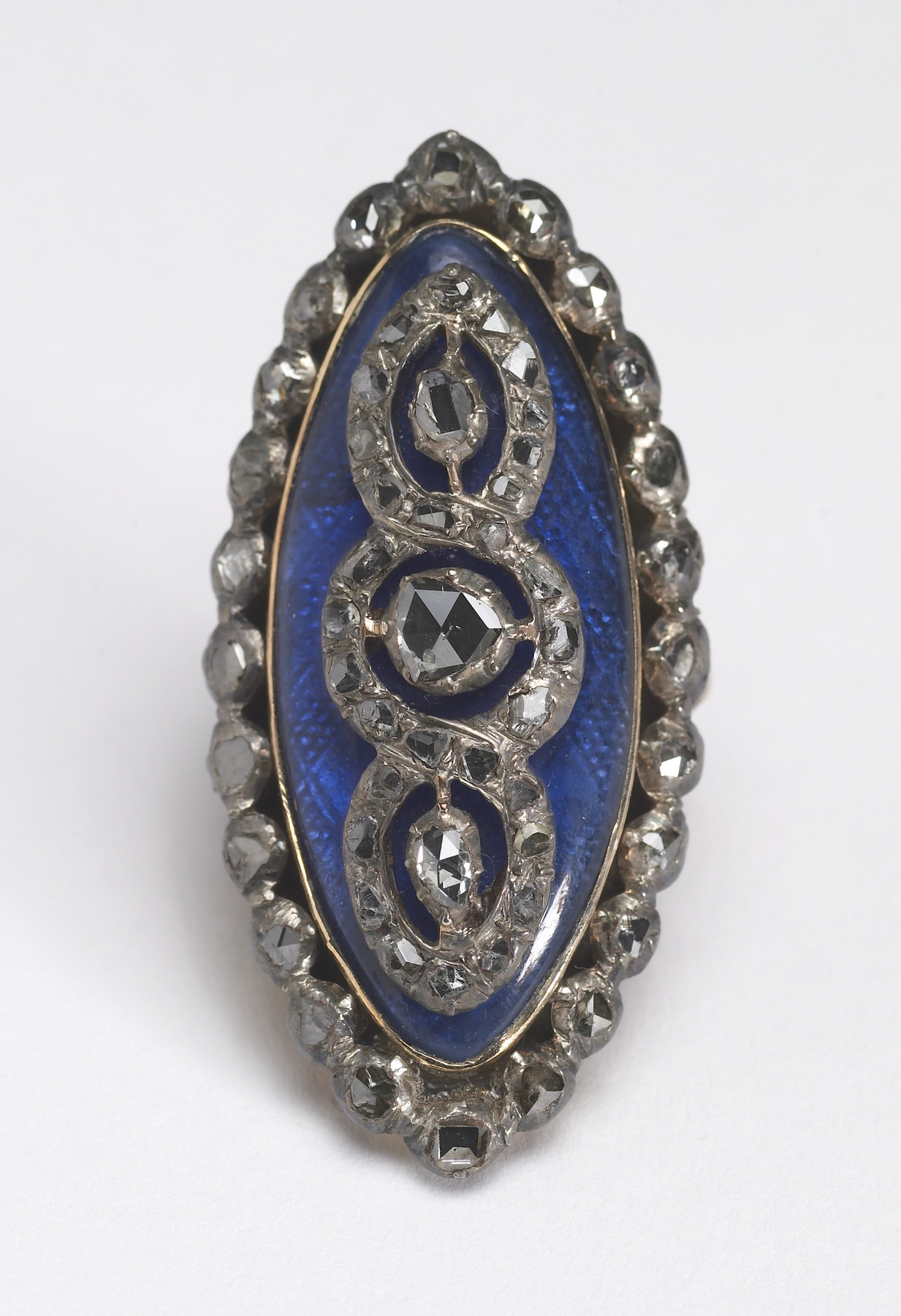Navette-Shaped Ring
In the 18th century, the allure of diamonds crossed cultures, and when worn, they were an immediately recognizable statement of personal worth. The cut of diamond that became most popular over the course of the 18th century was the brilliant-cut, which particularly enhanced the sparkle of stones that were often worn in greatest abundance at night, under flickering candlelight. From the 1720s, more diamonds than ever came to Europe. The international network of traders and skilled diamond cutters that had long linked Lisbon, Amsterdam, and London with India and Persia expanded to include Brazil, where new mines were opened.
This finger ring has a navette or boat-shaped bezel with a triple-loop setting of diamonds over a foiled, enamel ground.
Provenance
Provenance (from the French provenir, 'to come from/forth') is the chronology of the ownership, custody, or location of a historical object. Learn more about provenance at the Walters.
Acquired by Henry Walters, Baltimore; given to Laura F. Delano, New York; given to Walters Art Museum, 1946.
Exhibitions
| 1979-1980 | Jewelry - Ancient to Modern. The Walters Art Gallery, Baltimore. |
Conservation
| Date | Description | Narrative |
|---|---|---|
| 2/8/1962 | Treatment | cleaned; repaired |
Geographies
Switzerland
(Place of Origin)
Italy (Place of Origin)
Measurements
H of bezel: 1 3/4 x D: 11/16 in. (4.45 x 1.75 cm)
Credit Line
Gift of Laura F. Delano, 1946
Accession Number
In libraries, galleries, museums, and archives, an accession number is a unique identifier assigned to each object in the collection.
In libraries, galleries, museums, and archives, an accession number is a unique identifier assigned to each object in the collection.
57.1767


